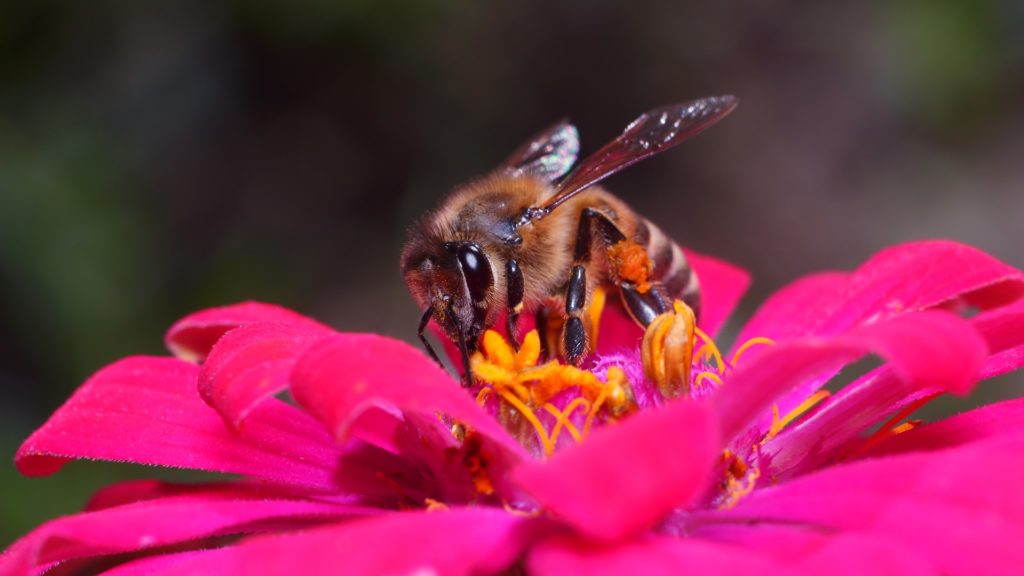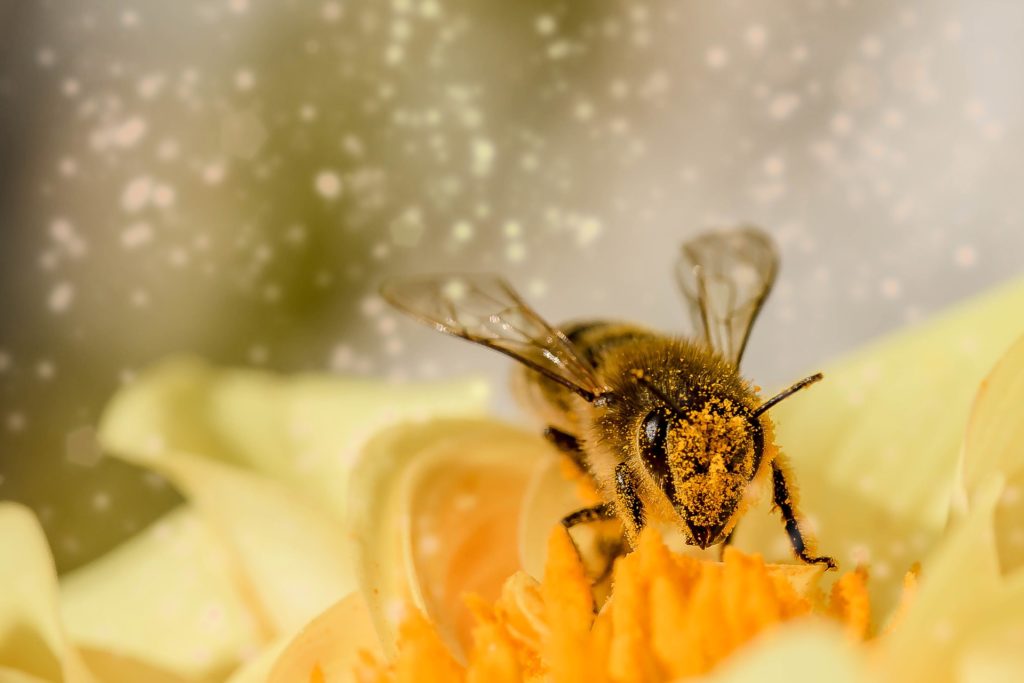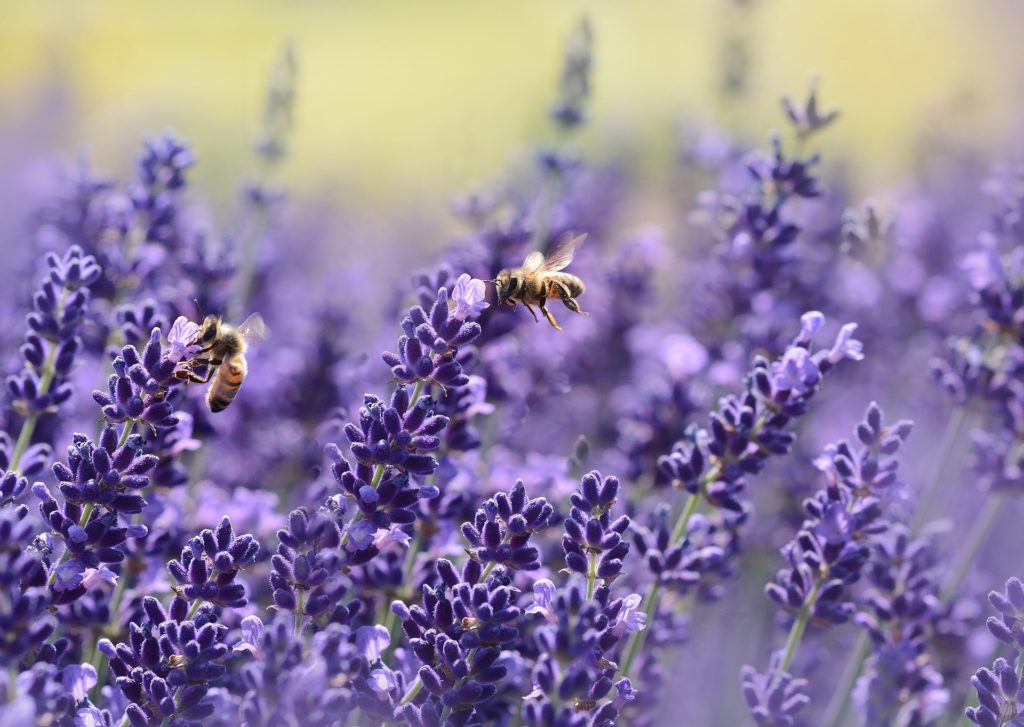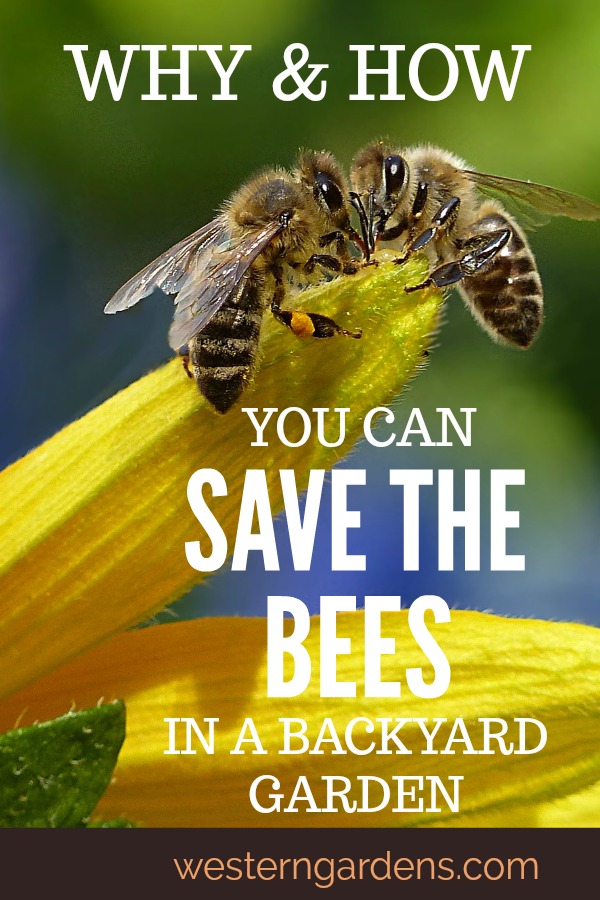Author: Maria Cannon (HobbyJr.org)

Photo by: Agzam on Pixabay CCO
Since 2010, the United States has suffered a loss of 40 percent of local honeybees. Native bee species are dying off too, with many of them categorized as either endangered or significantly declining. Our food and economy, as well as the entire ecosystem, depend on bees to survive. Our survival depends on their survival. By creating a bee-friendly garden, you can do your part to help save our important bees.
Why Bees Are So Important
According to Greenpeace, “Since the late 1990s, beekeepers around the world have observed the mysterious and sudden disappearance of bees and reported unusually high rates of decline in honeybee colonies.” Bees are famous for making honey, but their most important role is the pollination of crops. A third of the food that we eat depends on pollinating insects, including zucchini, apricots, almonds, coriander, canola oil, and more.

Photo by: MyriamsFotos on Pixabay CCO
A world without pollinators would not only be devastating for food production, but it would also have a huge economic impact. The worldwide economic value of bees’ pollination work has been estimated at roughly $306.4 billion annually. Obviously, they are important bees. In the United States, pollinators contribute more than $24 billion dollars to the economy, of which honeybees contribute more than $15 billion and native pollinators contribute $9 billion.
However, it’s not just the economy and our food that we should focus on. All pollinating insects play an essential role in ecosystems. Native bees may not pollinate as much of our crops, but they do pollinate wild plants, which are important to the larger ecosystem, creating food and habitats for other animals and insects. In essence, all bee populations are declining, and it’s important to help save them all.
Making Your Garden Bee-Friendly
Bees need nectar and pollen as food sources, so opt for flowers that provide both, such as goldenrod, asters, and sunflowers. You can also plant flowering vegetables and fruits. Bees need to eat until they retreat for the winter, so choose plants that bloom through multiple seasons or a variety of plants that will bloom at different times throughout the spring, summer, and fall. Aim to have at least ten bee plants in a grouping instead of spreading them out across the garden. Because bees also need water, you should add a pond, fountain, or other fresh water source.
While honeybees live in hives, native bees live in the ground. Provide a space in your garden for native bees to make their home by leaving an un-mulched space in your garden. A pile of undisturbed sand or wood will work too. Do not use pesticides and herbicides. Instead, introduce good bugs to provide natural protection against pests and weed your garden by hand.
If you live in an apartment or have limited space, you can easily grow pollinator plants in containers. Some pollinator plants that do well in containers include stinging nettles, asters, bee balm, purple coneflowers, and yarrow. You can incorporate more than one plant into a container to save space. Allow a tall plant, a rounded/full plant, and a trailing plant to share one container. All sizes of flowering plants help our important bees. Read our post on 8-tips for planting spring flower pots.

Photo by: Castlegaurd on Pixabay CCO
Starting Your Garden
When starting your garden, take the time to plan ahead. First, determine what you want to grow in your garden. There are many plants that attract pollinators, so choose the ones you like the best. As far as size, it’s best to start small and work your way toward a larger garden. When choosing the location of your garden, consider the position of the sun in your yard throughout the day and the quality of the soil.
Gardening doesn’t just help the bees. When you grow a garden, you can reap many of the health benefits it provides, including its calming effect. Gardening’s ability to calm the mind stems from it allowing you to center yourself, connect with nature, and take pride in creating something. It’s also a great form of exercise and has been proven to reduce the risk of osteoporosis and diabetes.
The rapid loss of bee populations is frightening. Not only will our food supply and economy take a big hit, but also the Earth’s entire ecosystem could be devastated. By planting a garden that’s full of pollinator plants that bloom in different seasons, you’re taking a big step in helping revamp the bee populations. Even if you simply provide a home for bees to nest, you can help do your part in saving the bees.

Wendy Pettit
Latest posts by Wendy Pettit (see all)
- Save Water, Save Money with Turf Training in 2022 - April 19, 2022
- utah spring jobs at Western Gardens - January 30, 2021
- Best Plants for Seniors – Beginner Gardening - June 29, 2020